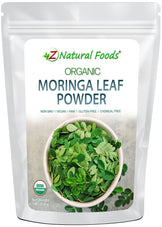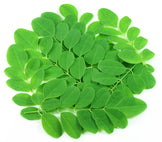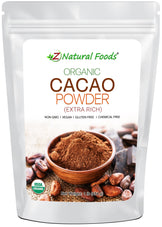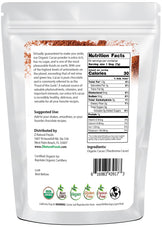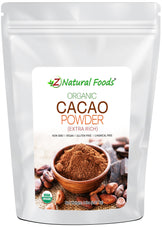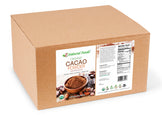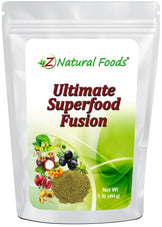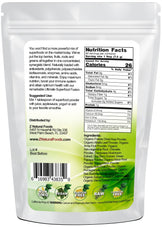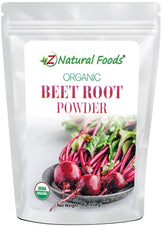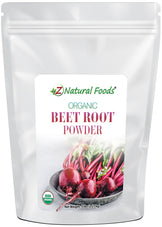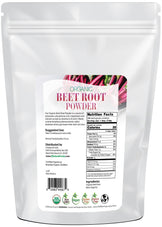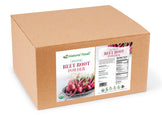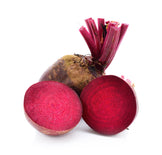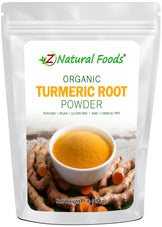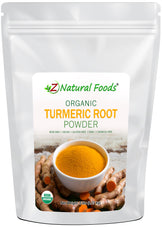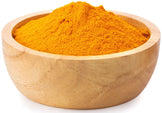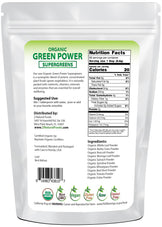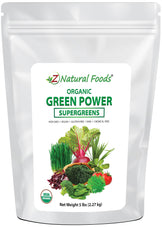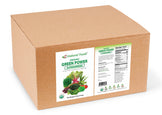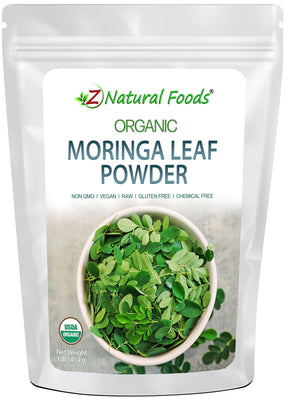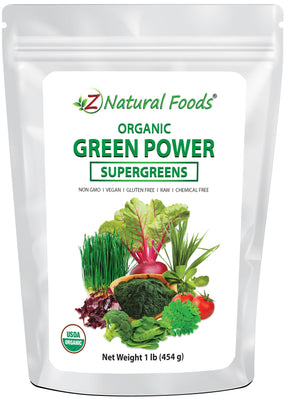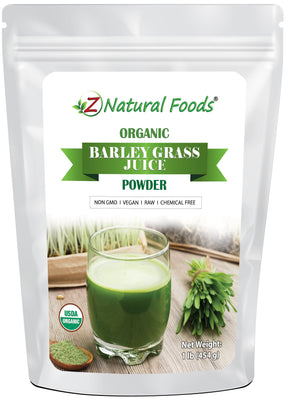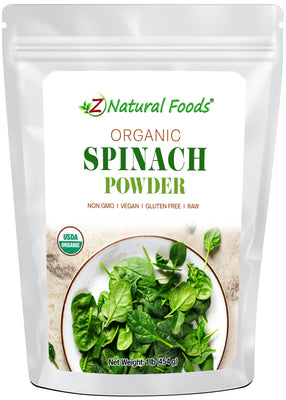About Product
We all remember growing up and hearing our mother tell us to eat our greens as we tried to hide them in our mashed potatoes or feed them to the dog under the table.
Truth be told, we didn’t know what we know now about the fantastic nourishment greens provide our bodies. Instinctively, our parents and grandparents knew it was good for us to eat.
Back then, it was peas and carrots or green beans found on the average American’s dinner table. Because we at Z Natural Foods believe in old-fashioned American values and that mothers always know what is best, we present an easy way to get all the quality nourishment from the super nutritious food, kale.
Our mission is to provide customers with great-tasting, highly functional foods with limitless application in their most versatile form to support a healthy, vibrant life. So, we introduce Z Natural Foods Organic Kale Powder.
Constituents of Kale include:
- Minerals: Calcium, Iron, Magnesium, Phosphorus, Potassium, Zinc, Copper, Manganese, Selenium
- Vitamins: Vitamin C, Thiamin, Riboflavin, Niacin, Pantothenic Acid, Vitamin B-6, Folate, Choline, Betaine, Vitamin A (RAE), Beta carotene, Vitamin A (IU), Lutein & Zeaxanthin, Vitamin E, Vitamin K
- Amino Acids: Tryptophan, Threonine, Isoleucine, Leucine, Lysine, Methionine, Cystine, Tyrosine, Valine, Arginine, Histidine, Alanine, Aspartic Acid, Glutamic Acid, Proline
- Flavonols: Isorhamnetin, Myricetin, Quercetin
- Phytochemicals: Sulforaphane, Indole-3-carbinol, Di-indolyl-methane (DIM)
This product is 100% natural and minimally processed. Taste, smell, texture, and color vary from batch to batch.
Suggested Use: Mix one tablespoon with recipes, juice, or add to your favorite smoothie.
Mixing suggestions: To increase flavor and nutritional profile, combined with our organic strawberry and banana powders.
Botanical Name: Brassica oleracea L. var. acephala.
Other Names: Curly Kale, Boerenkool, Farmer’s Cabbage, Black Cabbage, Tuscan Cabbage, Cavolo Nero, Collard, Borecole, Tuscan Kale, Laciniato, Dinosaur Kale.
Parts Used: Whole Kale leaf.
Ingredients: Raw Kale Leaf.
Origin: Grown and dried in China and packaged with care in Florida, USA.
Certifications: Certified USDA Organic.
How to Maintain Optimum Freshness
- This product is packaged in airtight stand-up, resealable foil pouches for optimum freshness.
- Once opened, push the air out of the pouch before resealing it to preserve maximum potency.
- Keep your powder in a cool, dark, dry place.
This product is 100% natural and minimally processed:
Taste, smell, texture, and color vary from batch to batch. Go here to learn why our products may naturally vary.
The important protections we take to bring you safe and nutritious superfoods:
Please go here to discover the essential steps we take to deliver fresh, quality nutrition.
Bulk Quantities?
Need to order a large quantity of our products? We are happy to help! Please get in touch with our Bulk department to discuss the details.
* Product packaging, pictures, and origin may vary.
Sources & References
1. Ambrosone CB, Tang L. Cruciferous vegetable intake and cancer prevention: role of nutrigenetics. Cancer Prev Res (Phila Pa). 2009 Apr;2(4):298-300. 2009.
2. Angeloni C, Leoncini E, Malaguti M, et al. Modulation of phase II enzymes by sulforaphane: implications for its cardioprotective potential. J Agric Food Chem. 2009 Jun 24;57(12):5615-22. 2009.
3. Banerjee S, Wang Z, Kong D, et al. 3,3'-Diindolylmethane enhances chemosensitivity of multiple chemotherapeutic agents in pancreatic cancer. 3,3'-Diindolylmethane enhances chemosensitivity of multiple chemotherapeutic agents in pancreatic cancer. 2009.
4. Bhattacharya A, Tang L, Li Y, et al. Inhibition of bladder cancer development by allyl isothiocyanate. Carcinogenesis. 2010 Feb;31(2):281-6. 2010.
5. Bryant CS, Kumar S, Chamala S, et al. Sulforaphane induces cell cycle arrest by protecting RB-E2F-1 complex in epithelial ovarian cancer cells. Molecular Cancer 2010, 9:47. 2010.
6. Carpenter CL, Yu MC, and London SJ. Dietary isothiocyanates, glutathione S-transferase M1 (GSTM1), and lung cancer risk in African Americans and Caucasians from Los Angeles County, California. Nutr Cancer. 2009;61(4):492-9. 2009.
7. Christopher B, Sanjeez K, Sreedhar C, et al. Sulforaphane induces cell cycle arrest by protecting RB-E2F-1 complex in epithelial ovarian cancer cells. Molecular Cancer Year: 2010 Vol: 9 Issue: 1 Pages/record No.: 47. 2010.
8. Clarke JD, Dashwood RH and Ho E. Multi-targeted prevention of cancer by sulforaphane. Cancer Lett. 2008 Oct 8;269(2):291-304. 2008.
9. Clarke JD, Dashwood RH, Ho E. Multi-targeted prevention of cancer by sulforaphane. Cancer Lett. 2008 Oct 8;269(2):291-304. 2008.
10. Cornelis MC, El-Sohemy A, Campos H. GSTT1 genotype modifies the association between cruciferous vegetable intake and the risk of myocardial infarction. Am J Clin Nutr. 2007 Sep;86(3):752-8. 2007.
11. Higdon JV, Delage B, Williams DE, et al. Cruciferous Vegetables and Human Cancer Risk: Epidemiologic Evidence and Mechanistic Basis. Pharmacol Res. 2007 March; 55(3): 224-236. 2007.
12. Ho E, Clarke JD, Dashwood RH. Dietary sulforaphane, a histone deacetylase inhibitor for cancer prevention. J Nutr. 2009 Dec;139(12):2393-6. 2009.
13. Hutzen B, Willis W, Jones S, et al. Dietary agent, benzyl isothiocyanate inhibits signal transducer and activator of transcription 3 phosphorylation and collaborates with sulforaphane in the growth suppression of PANC-1 cancer cells. Cancer Cell International 2009, 9:24. 2009.
14. Jiang H, Shang X, Wu H, et al. Combination treatment with resveratrol and sulforaphane induces apoptosis in human U251 glioma cells. Neurochem Res. 2010 Jan;35(1):152-61. 2010.
15. Kahlon TS, Chiu MC, and Chapman MH. Steam cooking significantly improves in vitro bile acid binding of collard greens, kale, mustard greens, broccoli, green bell pepper, and cabbage. Nutr Res. 2008 Jun;28(6):351-7. 2008.
16. Konsue N, Ioannides C. Modulation of carcinogen-metabolising cytochromes P450 in human liver by the chemopreventive phytochemical phenethyl isothiocyanate, a constituent of cruciferous vegetables. Toxicology. 2010 Feb 9;268(3):184-90. 2010.
17. Kunimasa K, Kobayashi T, Kaji K et al. Antiangiogenic effects of indole-3-carbinol and 3,3'-diindolylmethane are associated with their differential regulation of ERK1/2 and Akt in tube-forming HUVEC. J Nutr. 2010 Jan;140(1):1-6. 2010.
18. Lakhan SE, Kirchgessner A, Hofer M. Inflammatory mechanisms in ischemic stroke: therapeutic approaches. Journal of Translational Medicine 2009, 7:97. 2009.
19. Larsson SC, Andersson SO, Johansson JE, et al. Fruit and vegetable consumption and risk of bladder cancer: a prospective cohort study. Cancer Epidemiol Biomarkers Prev. 2008 Sep;17(9):2519-22. 2008.
20. Li F, Hullar MAJ, Schwarz Y, et al. Human Gut Bacterial Communities Are Altered by Addition of Cruciferous Vegetables to a Controlled Fruit- and Vegetable-Free Diet. Journal of Nutrition, Vol. 139, No. 9, 1685-1691, September 2009. 2009.
21. Lin J, Kamat A, Gu J, et al. Dietary intake of vegetables and fruits and the modification effects of GSTM1 and NAT2 genotypes on bladder cancer risk. Cancer Epidemiol Biomarkers Prev. 2009 Jul;18(7):2090-7. 2009.
22. Machijima Y, Ishikawa C, Sawada S, et al. Anti-adult T-cell leukemia/lymphoma effects of indole-3-carbinol. Retrovirology 2009, 6:7. 2009.
23. Nakamura Y, Yogosawa S, Izutani Y et al. A combination of indol-3-carbinol and genistein synergistically induces apoptosis in human colon cancer HT-29 cells by inhibiting Akt phosphorylation and progression of autophagy. Mol Cancer. 2009 Nov 12;8:100. 2009.
24. Navarro SL, Chang JL, Peterson S et al. Modulation of human serum glutathione S-transferase A1/2 concentration by cruciferous vegetables in a controlled feeding study is influenced by GSTM1 and GSTT1 genotypes. Cancer Epidemiol Biomarkers Prev. 2009 Nov;18(11):2974-8. 2009.
25. Nettleton JA, Steffen LM, Mayer-Davis EJ, et al. Dietary patterns are associated with biochemical markers of inflammation and endothelial activation in the Multi-Ethnic Study of Atherosclerosis (MESA). Am J Clin Nutr. 2006 Jun;83(6):1369-79. 2006.
26. Pellegrini N, Chiavaro E, Gardana C et al. Effect of Different Cooking Methods on Color, Phytochemical Concentration, and Antioxidant Capacity of Raw and Frozen Brassica Vegetables. J. Agric. Food Chem., 2010, 58 (7), pp 4310'4321. 2010.
27. Prawan A, Saw CL, Khor TO et al. Anti-NF-kappaB and anti-inflammatory activities of synthetic isothiocyanates: effect of chemical structures and cellular signaling. Chem Biol Interact. 2009 May 15;179(2-3):202-11. 2009.
28. Rungapamestry V, Duncan AJ, Fuller Z et al. Effect of cooking brassica vegetables on the subsequent hydrolysis and metabolic fate of glucosinolates. Proc Nutr Soc. 2007 Feb;66(1):69-81. 2007.
29. Silberstein JL, Parsons JK. Evidence-based principles of bladder cancer and diet. Urology. 2010 Feb;75(2):340-6. 2010.
30. Steinbrecher A, Linseisen J. Dietary Intake of Individual Glucosinolates in Participants of the EPIC-Heidelberg Cohort Study. Ann Nutr Metab 2009;54:87-96. 2009.
31. Tang L, Zirpoli GR, Guru K et al. Consumption of Raw Cruciferous Vegetables is Inversely Associated with Bladder Cancer Risk. Cancer Res. 2007 Apr 15;67(8):3569-73. 2007.
32. Tarozzi A, Morroni F, Merlicco A, et al. Sulforaphane as an inducer of glutathione prevents oxidative stress-induced cell death in a dopaminergic-like neuroblastoma cell line. J Neurochem. 2009 Dec;111(5):1161-71. 2009.
33. Thompson CA, Habermann TM, Wang AH, et al. Antioxidant intake from fruits, vegetables and other sources and risk of non-Hodgkin's lymphoma: the Iowa Women's Health Study. Int J Cancer. 2010 Feb 15;126(4):992-1003. 2010.
34. Vivar OI, Saunier EF, Leitman DC et al. Selective activation of estrogen receptor-{beta} target genes by 3,3'-diindolylmethane. Endocrinology. 2010 Apr;151(4):1662-7. 2010.
35. Yang G, Gao YT, Shu XO et al. Isothiocyanate exposure, glutathione S-transferase polymorphisms, and colorectal cancer risk. Am J Clin Nutr. 2010 Mar;91(3):704-11. 2010.
36. Zhang Y. Allyl isothiocyanate as a cancer chemopreventive phytochemical. Mol Nutr Food Res. 2010 Jan;54(1):127-35. 2010.
37. Zhu H, Jia Z, Zhou K et al. Cruciferous dithiolethione-mediated coordinated induction of total cellular and mitochondrial antioxidants and phase 2 enzymes in human primary cardiomyocytes: cytoprotection against oxidative/electr. Exp Biol Med (Maywood). 2009 Apr;234(4):418-29. 2009.
38. Heber D. Vegetables, fruits and phytoestrogens in the prevention of diseases. J Postgrad Med. Apr-Jun 2004;50(2):145-9.
39. Xiao D, Pinto JT, Gundersen GG, Weinstein IB. Effects of a series of organosulfur compounds on mitotic arrest and induction of apoptosis in colon cancer cells. Mol Cancer Ther. Sep 2005;4(9):1388-98.
40. Padilla G, Cartea ME, Velasco P, de Haro A, Ordas A. Variation of glucosinolates in vegetable crops of Brassica rapa. Phytochemistry. Feb 2007;68(4):536-45.
41. Hwang ES, Jeffery EH. Induction of quinone reductase by sulforaphane and sulforaphane N-acetylcysteine conjugate in murine hepatoma cells. J Med Food. 2005;8(2):198-203.
42. Wang LI, Giovannucci EL, Hunter D, Neuberg D, Su L, Christiani DC. Dietary intake of Cruciferous vegetables, Glutathione S-transferase (GST) polymorphisms and lung cancer risk in a Caucasian population. Cancer Causes Control. Dec 2004;15(10):977-85.
43. Cornblatt BS, Ye L, Dinkova-Kostova AT, et al. Preclinical and clinical evaluation of sulforaphane for chemoprevention in the breast. Carcinogenesis. 2007 Jul;28(7):1485-90.
44. Thejass P, Kuttan G. Augmentation of natural killer cell and antibody-dependent cellular cytotoxicity in BALB/c mice by sulforaphane, a naturally occurring isothiocyanate from broccoli through enhanced production of cytokines IL-2 and IFN-gamma. Immunopharmacol Immunotoxicol. 2006;28(3):443-57.
45. Khor TO, Hu R, Shen G, et al. Pharmacogenomics of cancer chemopreventive isothiocyanate compound sulforaphane in the intestinal polyps of ApcMin/+ mice. Biopharm Drug Dispos. Dec 2006;27(9):407-20.
46. Chasan-Taber L, Willett WC, Seddon JM, et al. A prospective study of carotenoid and vitamin A intakes and risk of cataract extraction in US women. Am J Clin Nutr. Oct 1999;70(4):509-16.
47. Brown L, Rimm EB, Seddon JM, et al. A prospective study of carotenoid intake and risk of cataract extraction in US men. Am J Clin Nutr. Oct 1999;70(4):517-24.
48. Dwyer JH, Navab M, Dwyer KM, et al. Oxygenated carotenoid lutein and progression of early atherosclerosis: the Los Angeles atherosclerosis study. Circulation. 2001 Jun 19;103(24):2922-7.
49. McAlister V. Control of coagulation: a gift of Canadian agriculture. Clin Invest Med. Dec 2006;29(6):373-7.
50. Schurgers LJ, Teunissen KJ, Hamulyak K, Knapen MH, Vik H, Vermeer C. Vitamin K-containing dietary supplements: comparison of synthetic vitamin K1 and natto-derived menaquinone-7. Blood. Apr 15 2007;109(8):3279-83.
51. Available at: http://www.nutritiondata.com/facts-C00001-01c20dh.html. Accessed November 20, 2007.
52. "World War Two vegetable comes back as 'superfood'". Daily Mail (London). 3 October 2007.
53. Bailey, L. H., (1912, republished in 1975). Jersey kale Photo. In Cyclopedia of American Agriculture: Vol. II--crops. Macmillan Publishing, New York. p. 389-390. ISBN 0-405-06762-3. Google Book Search. Retrieved on Nov, 2012.
54. Ravensthorpe, Michael (7 March 2013). "The Health Benefits of Kale". Spiritfoods. Retrieved 2 July 2013.
55. AA.VV. La cucina tradizionale Lombarda, ed. Newton Compton, A. Molinari L'antica cuciniera ligure, ed. De Ferrari AA
56. "Breeding Better Broccoli: Research Points To Pumped Up Lutein Levels In Broccoli". Science Daily. 8 November 2009. Retrieved 5 September 2010.
57. Yuesheng Zhang & Eileen C. Callaway (May 2002). "High cellular accumulation of sulphoraphane, a dietary anticarcinogen, is followed by rapid transporter-mediated export as a glutathione conjugate". The Biochemical journal 364 (Pt 1): 301"“307. PMC 1222573. PMID 11988104.
58. Warwick Medical School, University of Warwick (15 May 2007). "Research Says Boiling Broccoli Ruins Its Anti Cancer Properties".
59. "Broccoli chemical's cancer check". BBC News. 7 February 2006. Retrieved 5 September 2010.
60. "How Dietary Supplement May Block Cancer Cells". Science Daily. 30 June 2010. Retrieved 5 September 2010.
61. Talwinder Singh Kahlon, Mei-Chen M. Chiu, Mary H. Chapman (2008). "Steam cooking significantly improves in vitro bile acid binding of collard greens, kale, mustard greens, broccoli, green bell pepper, and cabbage". Nutrition Research 28: 351"“357.
62. Joy Larkcom (1 June 2003). The Organic Salad Garden. frances lincoln ltd. pp. 30"“32. ISBN 978-0-7112-2204-5. Retrieved 30 August 2012.
63. Cuthbertson, David Cuningham (1945). Autumn in Kyle and the Charm of Cunninghame. London: Jenkins. Page 186
64. http://www.ars-grin.gov/duke/
65. http://ndb.nal.usda.gov/ndb/foods
* Reviews & Success Stories Disclaimer
Product reviews solely reflect the views and opinions expressed by the contributors and not those of Z Natural Foods. Z Natural Foods does not verify or endorse any claims made in these reviews. Statements have not been evaluated by the FDA and are not intended to diagnose, treat, cure, or prevent any disease or health condition.REFERRAL PROGRAM
Share your personal link to your friends and welcome them with rewards. Claim yours when they make their first purchase.

GIVE
$10 off discount

GET
$10 off discount
Other products in the same category
Spinach Powder - Organic
$17.99





















